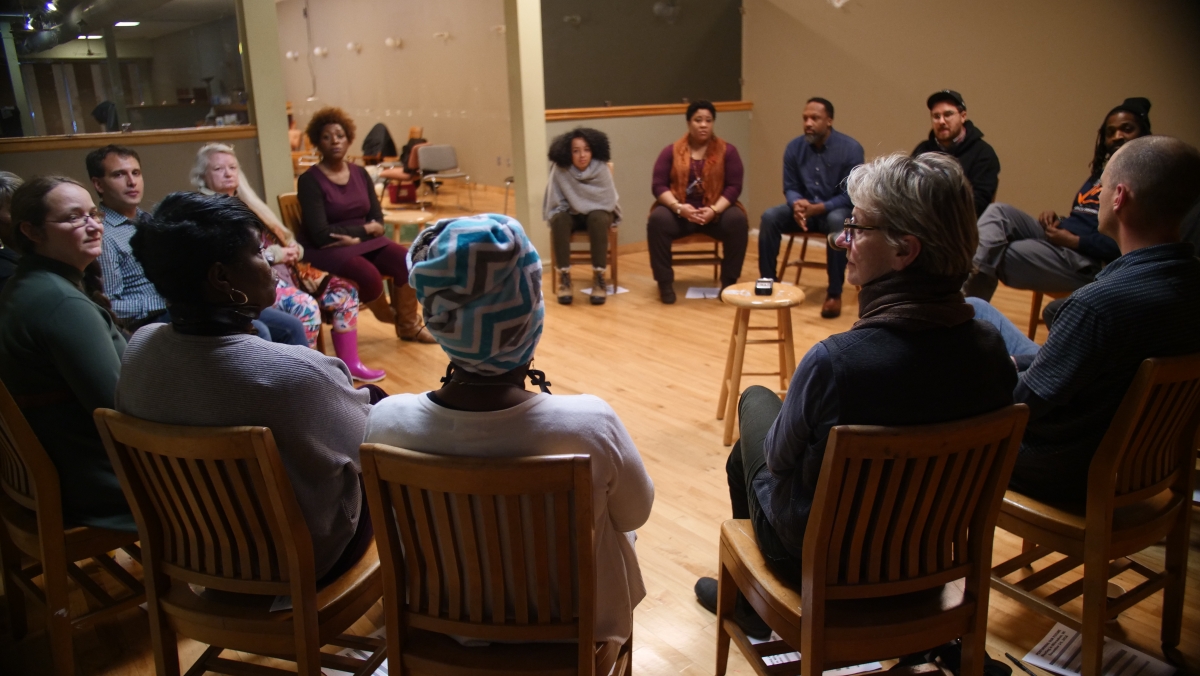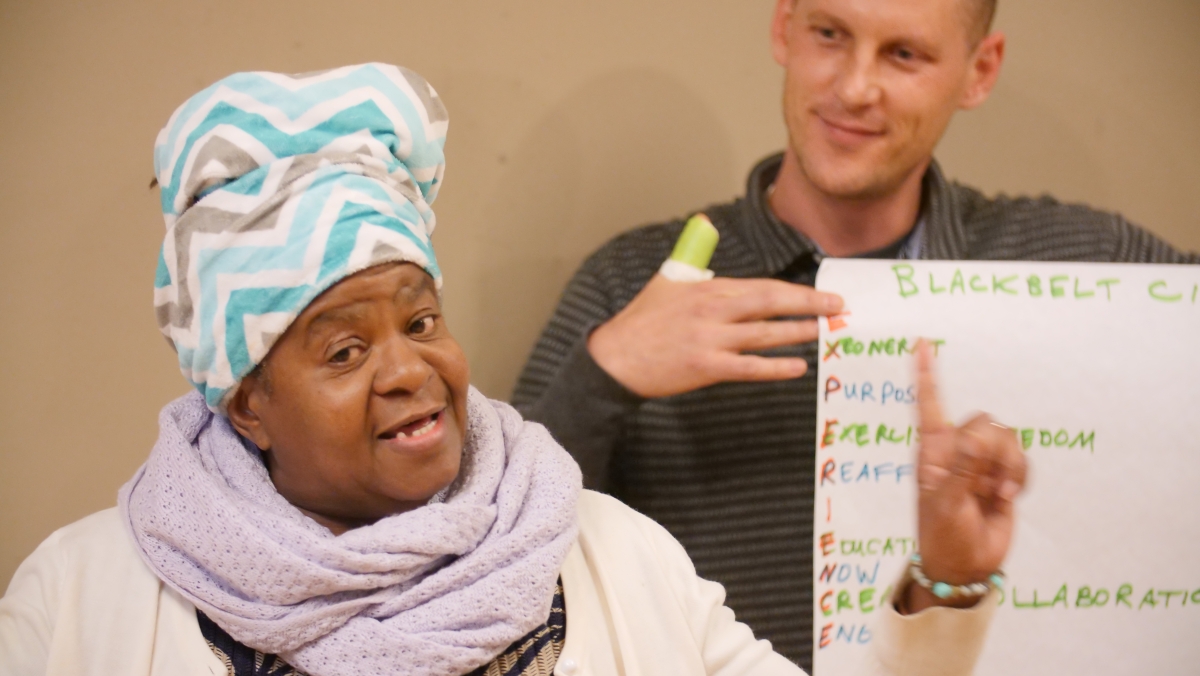On Cultural Organizing and Performing Our Future
Posted by Apr 21, 2020

Ben Fink
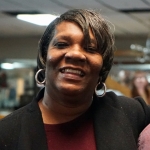
Denise Griffin Johnson
“We own what we make.” That’s the watchword of a national grassroots-to-grassroots coalition called Performing Our Future, which we both help lead. It unites communities across the country who have spent generations resisting economic exploitation—who historically have not owned what they make—and who have long been set against each other along racial, political, regional, and rural-urban lines. How have these communities historically resisted exploitation, and how have they now come together? Through the work of cultural organizing.
Cultural organizing is not the same as conventional community organizing or activism. Conventional community organizing and activism typically work from deficits: identify what’s missing in our communities, find and mobilize the people who agree with you, call out the inequity and injustice, and fight the bad guys. In the coalfields of East Kentucky and the inner city of West Baltimore, where we work, this usually means “organizing around” problems like unemployment, drugs, or disenfranchisement. Sometimes a meeting might start with a poem, or a protest might include beautiful puppets. But that’s still not cultural organizing. Cultural organizing is more than activism-plus-art.
Like conventional organizing, cultural organizing is about building power, understood as organized people plus organized money plus organized ideas. The difference is cultural organizers organize not around problems but around projects: music concerts that reflect the contributions our communities have made to world culture, plays that retell our communities’ stories in residents’ own words, community-run businesses that employ neighbors in recovery. These projects draw on and enhance a community’s shared material, its intellectual, emotional, and spiritual richness—its commonwealth. Artists, used to being treated as outside experts and gig-entrepreneurs, join this work as neighbors, with key skills to contribute. Government officials, used to steering the conversation, join this work as equals, no greater or lesser than anyone else. Youth, elders, poor folks, and others who are used to being ignored join this work as full participants, and are fully heard.
Projects get generated by people coming together, sharing personal stories, expressing what moves and matters to them, and listening to others do the same. The goal is not for everyone to take the same side on this or that issue, but to weave everyone’s diverse experiences and perspectives into a bigger story, in which all of us can see our own stories reflected. Cultural organizers facilitate this process.
A hundred years ago, when large numbers of African Americans started arriving in Baltimore, they brought their traditions with them. These included a love of fellowship in public places, which in Baltimore came to mean standing and talking on street corners. When the police started harassing them, they organized themselves and made their own place. That space, which they called the Arch Social Club, is now the oldest African American social organization in the city. It’s also the only remaining music and dining venue on West Baltimore’s historic Pennsylvania Avenue, in the middle of an open-air drug market and across the street from the CVS that burned in the 2015 Freddie Gray uprising.
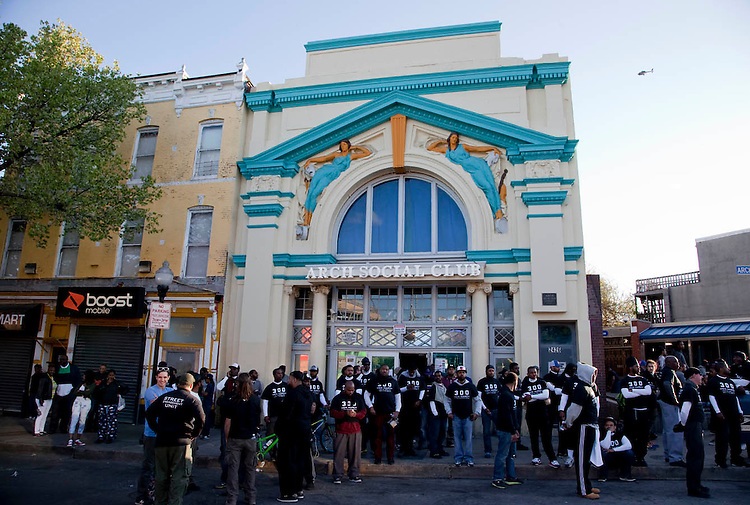
The Arch is an example of a “community center of power,” a term derived by Roadside Theater from civil rights strategist Bayard Rustin. Community centers of power are where cultural organizing happens. They are organizations of, by, and for the people in a place, where communities can gather in their full diversity, tell their own story, and make things together. They mark the difference between communities where someone else owns what we make—where the value of our work is taken from us—and communities where we own what we make.
The Performing Our Future coalition strengthens community centers of power by bringing them together into deeply-rooted local networks and bringing these local networks together nationally (or trans-locally). The coalition first met in 2018 in Uniontown, Alabama, home of our partners Black Belt Citizens Fighting for Health and Justice. Uniontown is a small rural town, about half an hour west of Selma, whose people are resisting all kinds of environmental injustices. Among them is a seven-story mountain of coal ash in a landfill just south of town that’s poisoning their water supply. It was built right next to the remains of an African American cemetery. The delegation from east Kentucky, a network of community centers of power called the Letcher County Culture Hub, discovered that some of that coal ash came from the Scotia mine in Letcher County, the site of one of the worst mine disasters in U.S. history. The same coal that killed people in Letcher County was now killing people in Uniontown.
In terms of deficits, our communities are already connected, whether we like it or not. Our work as cultural organizers is to make connections based in commonwealth: to identify common values, create common stories, and set a common agenda for building community power and wealth.
This past March, less than two years after we all met in Uniontown, a van full of visitors from Letcher County pulled up to the Arch Social Club. Among the delegation was Bill Meade, volunteer fire chief, former strip mine boss, and staunch supporter of Donald J. Trump. Some people called us crazy for bringing him there. They assumed our meeting would erupt with call-outs, accusations, and irreconcilable racial and political misunderstandings. But that did not happen. Bill and his fellow Kentucky delegates were inspired by a performance by the West Baltimore African American theater company WombWork Productions. And the folks from West Baltimore were equally moved when Bill and his fellow Kentuckians took the stage next, to perform a play they had made about their home and its future.
The success of this gathering was no accident. Bill may have come from a very different place, but his volunteer firehouse is a quintessential community center of power. Like the Arch Social Club, the Kings Creek Volunteer Fire Department is where the community comes together to enjoy fellowship and hold each other through shared challenges. One of the first things Bill spotted when he stepped into the Arch was the Narcan kit right by the front door. He might have lived 500 miles away, but he knew he was among neighbors.
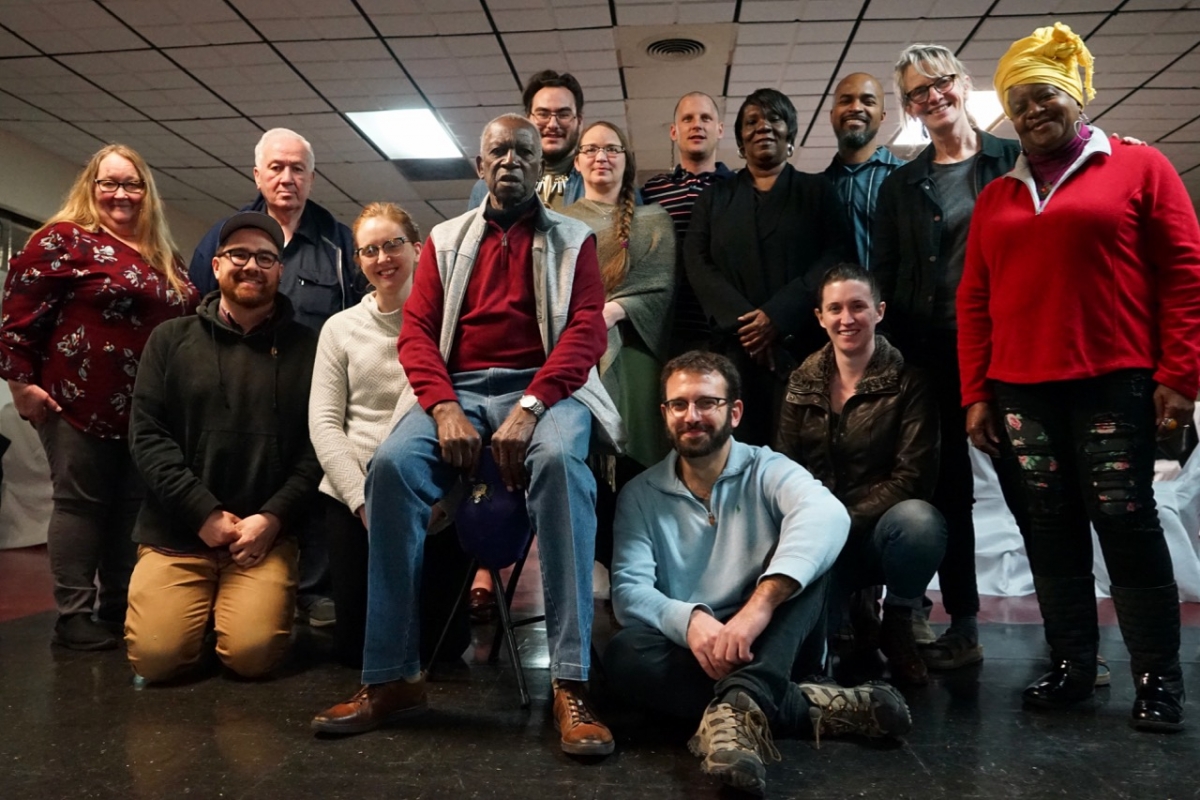
Cultural organizing makes it possible for neighbors from across the street and across the country to come together in remembrance, healing, and celebration. It creates the conditions for us to work alongside people we never thought could be allies, to open up possibilities we never could achieve or even imagine otherwise. It shows us how whole communities can unite around shared stories, traditions, and values—across seemingly-insurmountable differences—to build, grow, and protect the places we call home.

